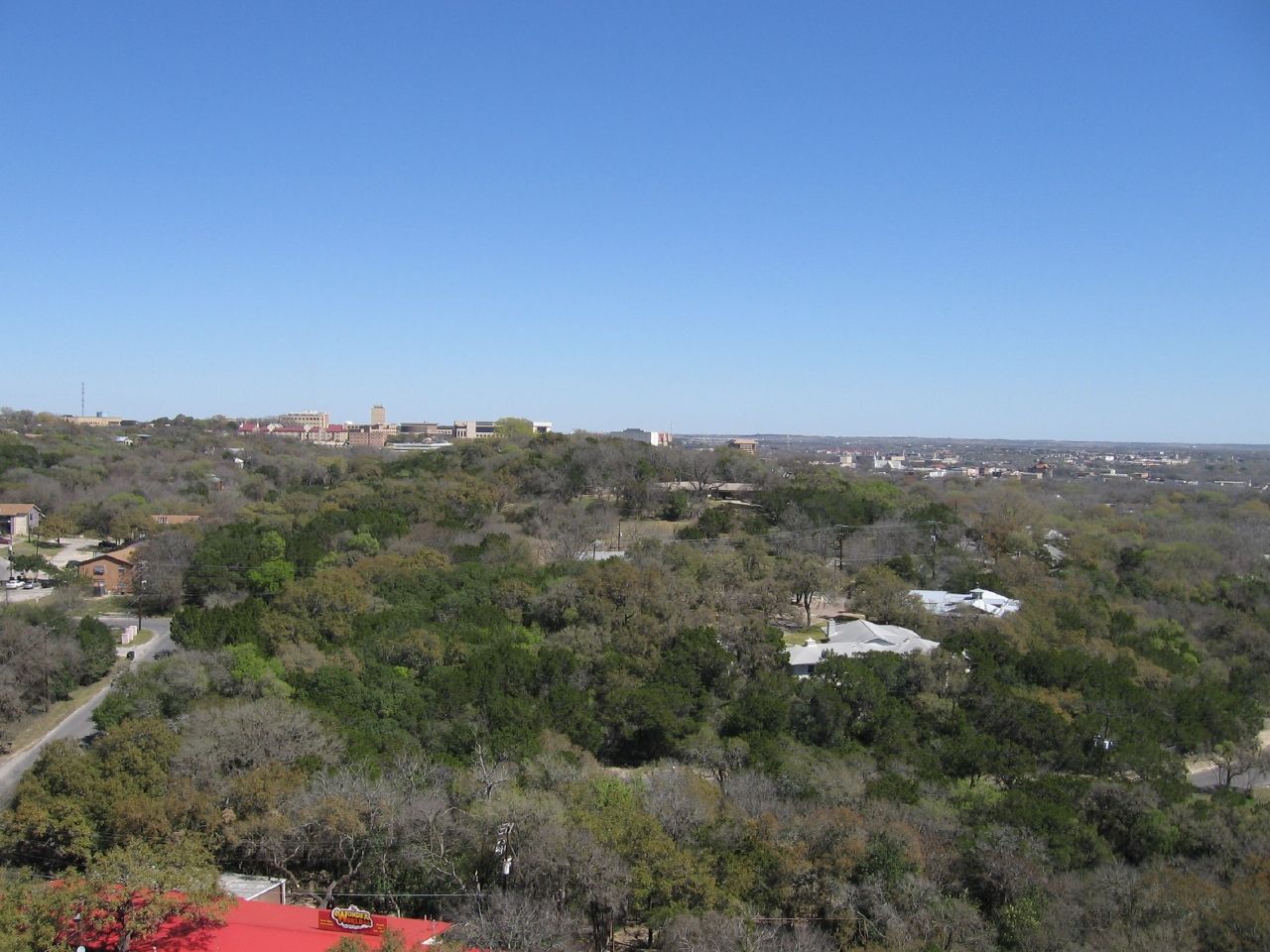San Marcos, Hays County, Texas, USA (March 2007)
Wonder World Park contained several attractions in one compact area, including a cave; an observation tower, an “anti-gravity” house, and a wild animal park. It also included a gift shop and a snack bar. Tickets could be purchased for the entire tour or for individual portions.
Wonder Cave

The underlying rock surrounding Wonder Cave formed at the bottom of a vast sea during the Cretaceous Period when dinosaurs roamed the earth, about 100 million years ago. The fossilized remains of ancient clams remained entombed in the cavern rooftop.
An earthquake several million years ago along the Balcones Fault caused rock to slide and separate, and resulted in an underground fissure that today is called Wonder Cave. This is a dry cave created instantly by a single calamitous event rather than by water dripping slowly over millennia, so don’t expect to see stalactites and stalagmites. Even so chambers are large and impressive. The cavern sat undiscovered until 1893 when a local resident digging a well lost a drill bit that punctured the cavity. The cave began operating as a tourist attraction by 1903.
A Geological and Geographical Divide

Wonder Cave straddles the Balcones Escarpment, the line that separates a broad coastal plain rising up from the Gulf of Mexico from the famous Texas Hill Country. It marked the ancient edge of North America. More recently it marked a cultural divide between the antebellum traditions of the Deep South and the cowboy lifestyle of the Old West: cotton versus cattle. Cavern visitors 100 feet below ground can touch both worlds simultaneously with outstretched arms.
Observation Tower

An elevator whisked visitors from deep within the cavern to the top of a 110-foot observation tower with panoramic views of San Marcos. The vista in this image points approximately northeast. The flat Gulf Coastal Plain dominates the right side of the photo. The Balcones line runs through the red roof (entrance to Wonder Cave) to the tall buildings on the horizon (Texas State University – San Marcos). The Texas Hill Country begins on the left.
Moving Right Along

The tour proceeded through an “anti-gravity” house. This was a structure built at an angle to create an optical illusion. It made it seem like people were leaning over rather than the building. I didn’t get any decent photos though.
Next the guide led sightseers to a little train for the final part of the tour. It was actually a small tractor outfitted to look like a train hauling carriages but our young kids couldn’t tell the difference. They just liked going for a ride. The train traveled a short distance across the street and through a man-made tunnel into the Wild Animal Park.
Among the Animals

The Wild Animal Park contained most of the usual suspects, mainly deer and various large birds. Deer walked boldly up to the train in search of treats and handouts. The train stopped to allow kids to feed the animals from their hands. It’s not like some petting zoos where visitors can walk freely among the animals, but the train did get pretty close to them. It chugged its way through the rest of the park and returned to the parking lot.
The entire Wonder World tour took about two hours and involved four very different activities. This artifact of roadside Americana felt like a throwback an earlier age before the dominance of large corporate theme parks and all-inclusive resort destinations. It helped fill an otherwise idle afternoon and our toddler and preschooler enjoyed it.

Leave a Reply